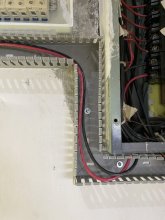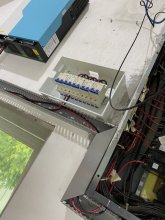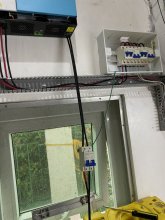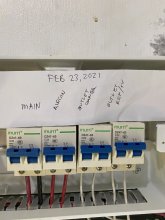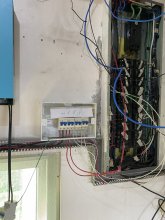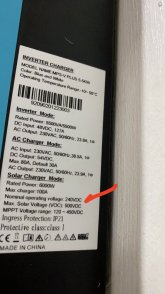thank u ?
it got me confused grounding the "negative line" ?
so i searched youtube.. and found grounding each panel frames ?
Here is a very long post, in which I will try to present a bit information about electrical Code "standards", and then show your high-powered panel arrangement to be similar ("analogous") to code requirements for a separate safety ground wire in all 120v/240v electrical service wiring within buildings.
- - -
'Grounding' refers to the Green or Bare safety wire.
"Grounded", in Alternating-Current terminology refers to the current-carrying Neutral, and it is a word which I try to never, ever use in describing an AC circuit white wire. In order to prevent the almost inevitable confusion, I try to always describe that wire as the "Current Carrying Neutral" first, and as the "Neutral" afterwards (and always capitalized).
DC Battery "Grounding Wires", and an RV frame, and the bus for Green/Bare "Grounding Wires" should always be interconnected. When a Trailer or RV is plugged into a Grid-Based Service outlet, the green wire leading to the outlet is joined with both a genuine grounding rod and with the current carrying neutral, and with the Utility-provided current-carrying Neutral. But this happens way back at the primary Service panel, where the Utility is connected.
"Current carrying Neutral" should never, ever be interconnected with "Grounding Wires" (the safety and battery grounding wires) before reaching a panel with a true grounding rod. Each panel frame should have safety grounding. As member 'LB3' described in
this post (just above), you have "PV+" carrying high Voltage AND high current, and "PV -" at nearly zero Voltage -- but extremely high current. Your "PV -" wire is sort of like the current carrying Neutral in 120/240-VAC wiring, and I agree with LB3 -- with high current and considerable voltage drop along the "PV -" wire, your configuration really SHOULD have a true safety grounding wire into the panels. (A separate connection which normally carries no current at all).
In a common residential arrangement, the PV+ and PV- wires are enclosed in EMT conduit (labeled as high Voltage DC), with the conduit serving as 'safety grounding', providing a genuine safety "Grounding Wire" and being analogous to modern 120/240-VAC wiring practice.
(In the old days, 120/240-VAC was wired without separate bare/green safety wires. All of the resulting fires caused that practice to be discontinued in modern electric codes.)
Within your controller,
"PV -" ,
"Battery -", and your 230-VAC connection share a bus, using
the 230-VAC Safety Grounding wire. (Not the white wire!) as the final drain. But with Voltage drop along your PV wires, and high current contained within them, I recommend that you wire between your Solar COntroller and your Panels in a way which is "analogous" to 3-wire 120-VAC: With a separate "safety grounding" connection for the panel frames (through conduit, or wired explicitly separate). It will only carry significant current when something really bad happens - and that is the case for which I recommend that you put it in there. (Lightning Strike, Short Circuit, etc.)








